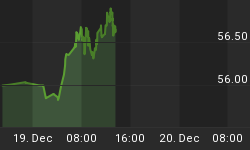Our composite indicator that assesses the strength in the trends of gold, 10 year Treasury yields, and crude oil will remain in the extreme zone by the end of the week. This represents a headwind for equities.
Figure 1 is a weekly chart of the S&P500 and the indicator is shown in the lower panel. If you had been so smart to only "buy" the S&P500 during those times when the indicator was extreme, then you would get those trades seen in figure 1. Winning trades are in green; the losing trades are noted by the red trend line. Since the March, 2009 low, the indicator has been at or in the extreme zone 6 times. If you bet long on the S&P500 when the indicator was extreme, these 6 trades resulted in 3 losses (-4.99%, -2.24%, -0.78%) and 3 wins (1.06%, 0.35%, 0.04%). The winning trades essentially were multi-week trading ranges for the S&P500. During the past 12 months when the indicator was in the extreme zone, the S&P500 either went down or side ways.
Figure 1. S&P500/ weekly
For a more comprehensive look at this indicator and how stocks under perform when the indicator is extreme, I refer you to the following articles:
"Developing A Trading Strategy (Part 2)"
"More Headwinds To Worry About"
"Inflationary Pressures Are A Legitimate Concern"















